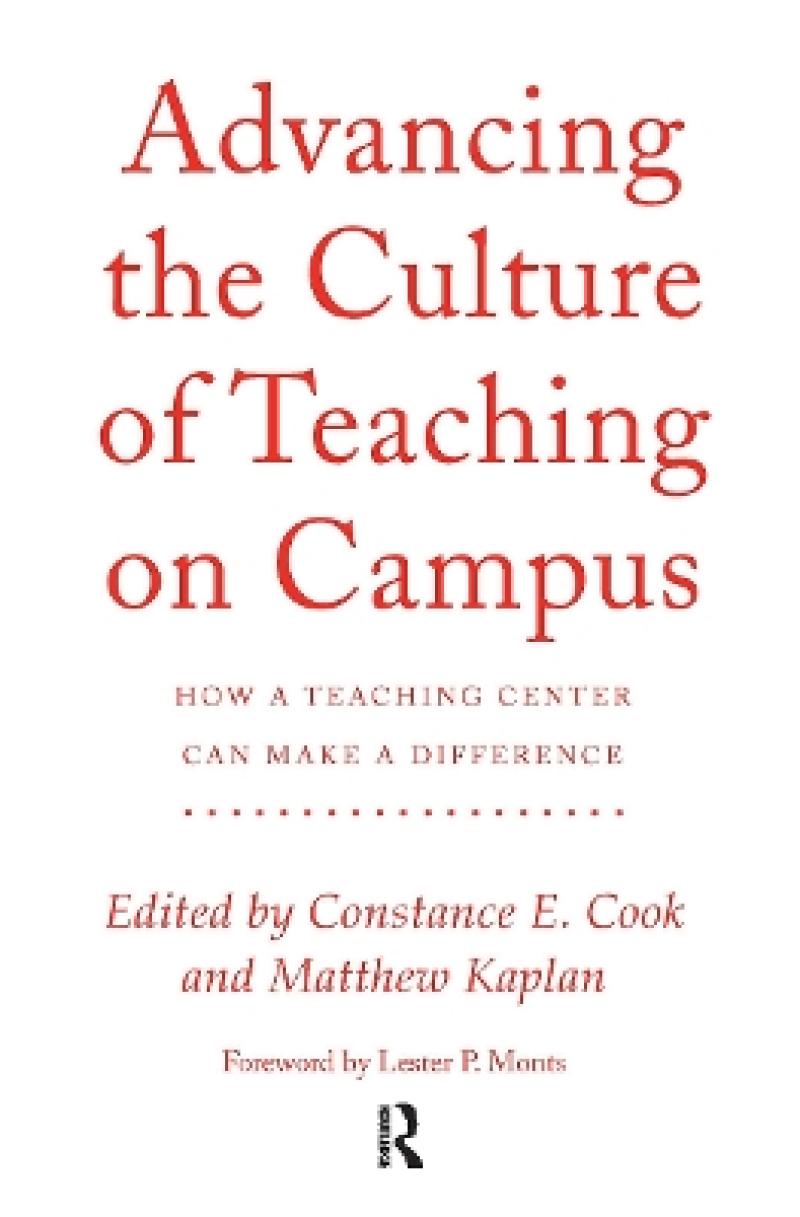<p>"This book assists the reader in thinking more deeply about how to successfully navigate institutional organization, politics, and managing change at a campus where faculty have little discretionary time. The book also explains how the CRLT effectively manages the yearly changes of services based on institutional priorities. It is an excellent text for those considering entering a career in a teaching center."</p><p>Teachers College Record</p><p>"Essays by the director and staff of the University of Michigan's Center for Research on Learning and Teaching, considered the first, and one of the largest such centers in American higher education."</p><p>The Chronicle of Higher Ed</p><p>“A valuable contribution to the literature on institutional change. This book is full of lessons that CRLT has learned through the years. I hope that you find it as informative as I do.”</p><p>Lester P. Monts, Lester P. Monts is the Senior Vice Provost for Academic Affairs</p><p>University of Michigan</p>
Written by the director and staff of the first, and one of the largest, teaching centers in American higher education – the University of Michigan’s Center for Research on Learning and Teaching (CRLT) – this book offers a unique perspective on the strategies for making a teaching center integral to an institution’s educational mission. It presents a comprehensive vision for running a wide range of related programs, and provides faculty developers elsewhere with ideas and material to prompt reflection on the management and practices of their centers – whatever their size – and on how best to create a culture of teaching on their campuses. Given that only about a fifth of all U.S. postsecondary institutions have a teaching center, this book also offers a wealth of ideas and models for those administrators who are considering the development of new centers on their campuses.Topics covered include:• The role of the director, budgetary strategies, and operational principles• Strategies for using evaluation to enhance and grow a teaching center• Relationships with center constituencies: faculty, provost, deans, and department chairs• Engagement with curricular reform and assessment• Strengthening diversity through faculty development• Engaging faculty in effective use of instructional technology• Using student feedback for instructional improvement• Using action research to improve teaching and learning• Incorporating role play and theatre in faculty development• Developing graduate students as consultants• Preparing future faculty for teaching• The challenges of faculty development at a research universityIn the concluding chapter, to provide additional context about the issues that teaching centers face today, twenty experienced center directors who operate in similar environments share their main challenges, and the strategies they have developed to overcome them through innovative programming and careful management of their resources. Their contributions fall into four broad categories: institutional-level challenges, engaging faculty and students and supporting engaged pedagogy, discipline-specific programming, and programming to address specific instructor career stages.
Written by the director and staff of the first, and one of the largest, teaching centers in American higher education – the University of Michigan’s Center for Research on Learning and Teaching (CRLT) – this book offers a unique perspective on the strategies for making a teaching center integral to an institution’s educational mission.
FOREWORD Lester P. Monts INTRODUCTION CRLT and Its Role at the University of Michigan Constance E. Cook PART ONE. LEADERSHIP AND CORE FUNCTIONS 1. LEADING A TEACHING CENTER Constance E. Cook 2. MEASURING A TEACHING CENTER’S EFFECTIVENESS Mary C. Wright 3. FORGING RELATIONSHIPS WITH FACULTY AND ACADEMIC ADMINISTRATORS Constance E. Cook and Deborah S. Meizlish 4. CONSULTATIONS ON TEACHING Using Student Feedback for Instructional Improvement Cynthia J. Finelli, Tershia Pinder-Grover, and Mary C. Wright 5. GRADUATE PEER TEACHING CONSULTANTS Expanding the Center’s Reach Tershia Pinder-Grover, Mary C. Wright, and Deborah S. Meizlish 6. APPROACHES TO PREPARING FUTURE FACULTY FOR TEACHING Chad Hershock, Christopher R. Groscurth, and Stiliana Milkova PART TWO. SPECIAL EMPHASES AT CRLT 7. THE ROLE OF A TEACHING CENTER IN CURRICULAR REFORM AND ASSESSMENT Constance E. Cook, Deborah S. Meizlish, and Mary C. Wright 8. STRENGTHENING DIVERSITY THROUGH FACULTY DEVELOPMENT Crisca Bierwert 9. ENGAGING FACULTY IN EFFECTIVE USE OF INSTRUCTIONAL TECHNOLOGY Erping Zhu, Matthew Kaplan, and Charles Dershimer 10. ACTION RESEARCH FOR INSTRUCTIONAL IMPROVEMENT Chad Hershock, Constance E. Cook, Mary C. Wright, and Christopher O’Neal 11. ROLE-PLAY AND BEYOND Strategies for Incorporating Theatre Into Faculty Development Matthew Kaplan and Jeffrey Steiger CONCLUSION Responding to Challenges Faced by Teaching Centers at Research Universities Matthew Kaplan with contributions from. Terry Aladjem, Lori Breslow, Susanna Calkins, Deborah DeZure, Robyn Dunbar, Jean C. Florman, Marne Helgesen, Alan Kalish, David Langley, Gregory Light, Angela Linse, Michele Marincovich, Joan Middendorf, Allison Pingree, William C. Rando, Mary Deane Sorcinelli, Kathy Takayama, Pratibha Varma-Nelson, Suzanne Weinstein, and Mary-Ann Winkelmes REFERENCES ABOUT THE EDITORS AND CONTRIBUTORS INDEX
